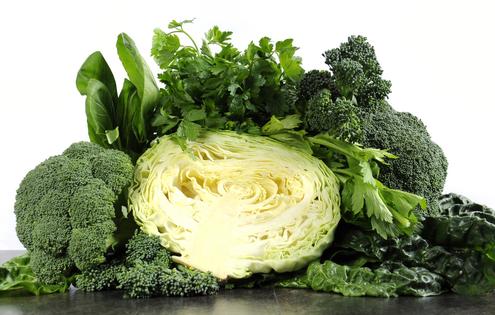The best leafy green vegetables
Published in Health & Fitness
Leafy green vegetables are a diverse group of vegetables known for their vibrant green color and abundance of nutrients.
As part of a healthy diet, vegetables in general offer a wealth of health benefits, including supporting the immune system, and reducing the risk of chronic diseases like type 2 diabetes, heart disease, and certain types of cancer.
Here are five different types of leafy greens to consider adding into your daily meals.
1. Swiss chard
Swiss chard is in the same family as beets, says Cheryl Mussatto, a clinical dietitian at Cotton O’Neil Diabetes and Endocrinology Clinic in Topeka, Kansas.
Swiss chard is especially rich in vitamin K, an important nutrient involved in blood clotting and bone health. One cup of raw Swiss chard provides 299 mcg of vitamin K, meeting 249% of the vitamin's daily value. Swiss chard also provides 12% of the daily value of vitamins A and C, both important for supporting immune health.
Swiss chard is best from spring through fall. Enjoy Swiss chard raw in salads and sandwiches, or cooked by boiling, sauteing, braising, or adding to soups, casseroles, and stir-fries.
2. Kale
One cup of raw kale provides 80 mcg of vitamin K and 19 mg of vitamin C. Kale also offers 8% of the daily value of manganese, a mineral involved in several bodily functions including energy production, bone health, and reproduction.
Like turnip greens, kale is best from October through early spring. While kale is a popular leafy green for salads, its bitterness can be off-putting to some. To temper this bitterness, try incorporating sweetness into your kale salad with the addition of chopped apples or dried fruit, advises Mussatto.
3. Spinach
Spinach is a popular leafy green that’s eaten raw in a variety of ways from smoothies and salads to wraps and sandwiches, says registered dietitian and plant-based recipe developer Stephanie McKercher. Considered a multi-purpose leafy green, you can also add a handful of spinach to cooked meals like pasta, soup, and eggs.
Spinach is typically available year-round and offers iron, a vital mineral required for making hemoglobin, the protein that provides oxygen to the muscles. One cup of raw spinach provides 0.813 mg of iron, while one cup of cooked spinach offers 6 mg of iron.
4. Arugula
Arugula, a peppery-flavored leafy green, is a great addition to the top of pizza to make it a more balanced nutrient-dense meal, notes Schmidt. One cup of raw arugula offers 22 mcg of vitamin K. While available year-round, arugula is best in the early spring or fall months, says Schmidt.
Similar to other cruciferous vegetables, arugula contains glucosinolates, compounds that exhibit anti-inflammatory and antioxidant effects.
5. Cabbage
Cabbage is widely available year-round and is especially rich in vitamin C, with one cup of raw shredded cabbage providing 26 mg. Although vitamin C is most known for its role in immune health, it also offers collagen, a protein needed for wound healing.
Cabbage can be enjoyed in a variety of ways, from raw in salads and slaws to cooked in soups and stir-fries. It can also be fermented into sauerkraut or kimchi for a tangy and probiotic-rich addition to your diet.
(Health delivers relevant information in clear, jargon-free language that puts health into context in peoples’ lives. Online at www.health.com.)
©2024 Dotdash Meredith. All rights reserved. Used with permission. Distributed by Tribune Content Agency, LLC.










Comments